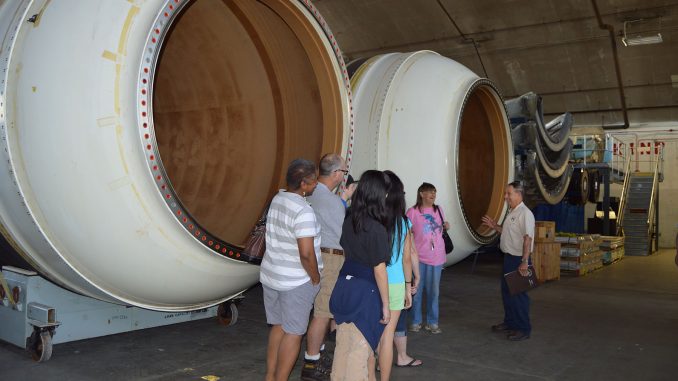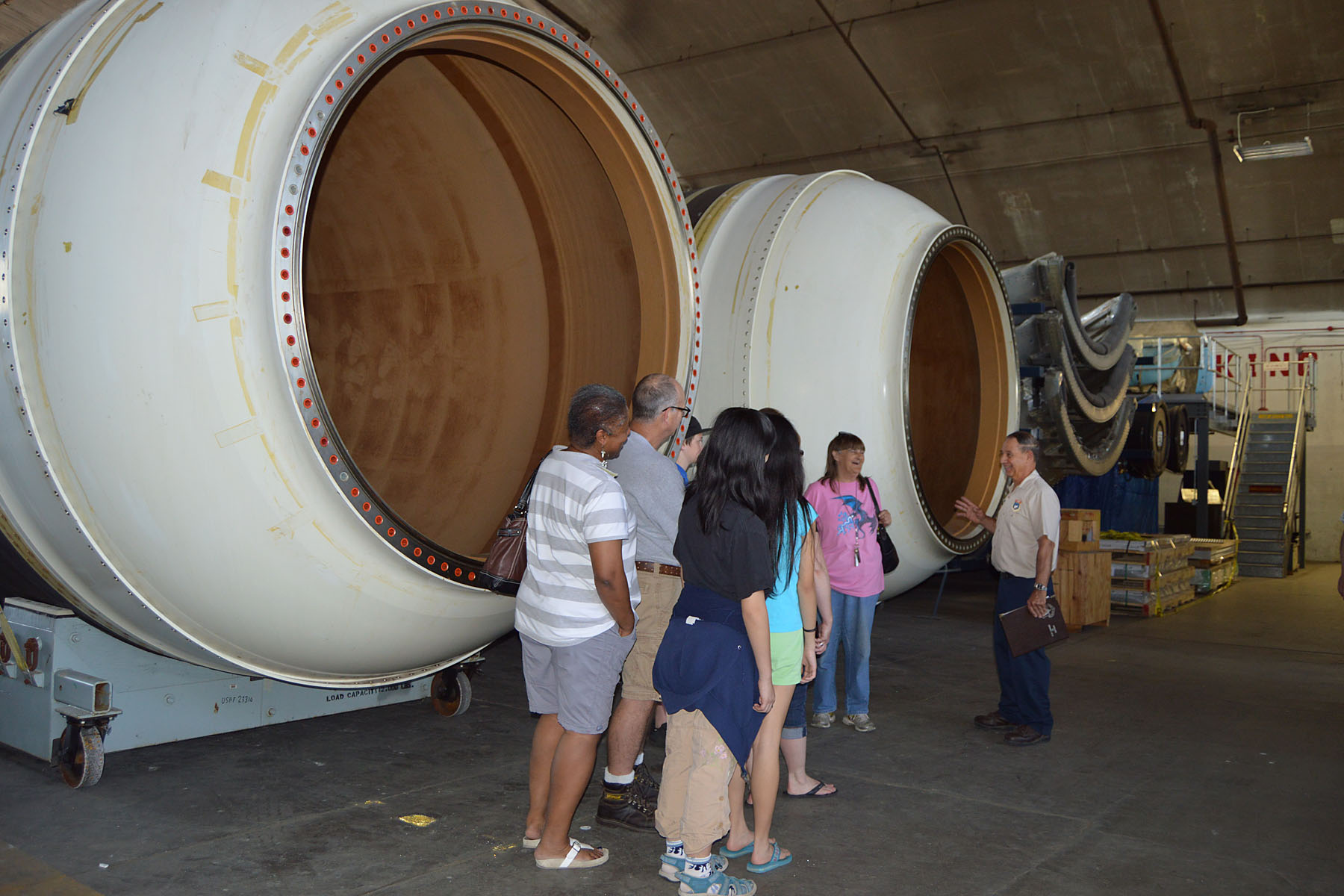

PRESS RELEASE — It sits in gigantic pieces in a World War II era hangar at Wright-Patterson Air Force. Acquired in 2005 from Lockheed Martin, this important space artifact has been waiting in storage for restoration specialists to bring it back to life. Now, as the National Museum of the U.S. Air Force prepares for its new 224,000 square foot fourth building, the time has finally come to begin restoring the Titan 4B space launch vehicle.“This is the largest artifact we have ever restored,” said Greg Hassler, a supervisor in the Restoration Division. “We have moved all the pieces into our restoration hangars, and now our staff is cataloging parts and planning the best way to tackle this massive project.”
The impressive Titan 4B, with roots going back to the early days of U.S. Air Force and civil space launch, is significant as the museum looks to share the story of USAF and USAF-enabled space operations.“The Titan 4B and the exhibit space around it will be crucial for telling the USAF space story,” said Dr. Doug Lantry, project manager for the new Space Gallery, which will be housed in the fourth building. “These exhibits are important because they illustrate what the USAF has done in space to defend our nation, how those jobs were and are done and by whom, and how the science, technology, engineering and mathematics of space work in the context of national defense history.”
The Titan rocket family formed a critical component of U.S. access to space for nearly 50 years, with the first launch in 1959 and the last in 2005. More than 350 Titans were launched overall. The Titan family included two models of intercontinental ballistic missiles (ICBMs), and several variously configured types of space launch vehicles.Although the museum’s Restoration Division has worked on several missiles and space launch vehicles, including the Titan I and Titan II on display in the Missile Gallery, the Titan 4B will be a unique project. Standing more than 200 feet tall, the Titan 4B is nearly twice as tall as other similar vehicles in the museum’s collection.
“The Titan 4B is just a giant,” Hassler said. “Just one of its solid rocket motor units weighs 75,000 pounds, with a diameter of 10 and a half feet. One of the biggest challenges for our staff is going to be figuring out how to assemble and display it horizontally because it is too tall to stand up inside the gallery.”The museum’s Research Division will assist the restoration staff with curatorial research to ensure the rocket is displayed accurately. They are looking for help from those who worked in the Titan 4B program. If you or someone you know can provide expert assistance with the project, please contact the Research Division at nationalmuseum.mua@us.af.mil.
In the meantime, the staff is looking forward to the eventual display of the launch vehicle.“Titan-derived space launch vehicles boosted many important defense and civilian satellites and upper stage vehicles into orbit,” Lantry said. “The final exhibit, showcased in our newest building, is going to provide a great opportunity to talk about U.S. military space efforts and the story of USAF space launch.”
The National Museum of the U.S. Air Force, located at Wright-Patterson Air Force Base near Dayton, Ohio, is the world’s largest military aviation museum. With free admission and parking, the museum features more than 360 aerospace vehicles and missiles and thousands of artifacts amid more than 17 acres of indoor exhibit space. Each year about one million visitors from around the world come to the museum. For more information, visit www.nationalmuseum.af.mil.



Be the first to comment
Graphic Design, Branding and Aviation Art